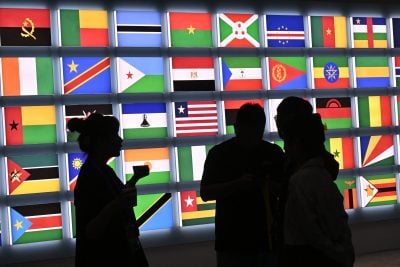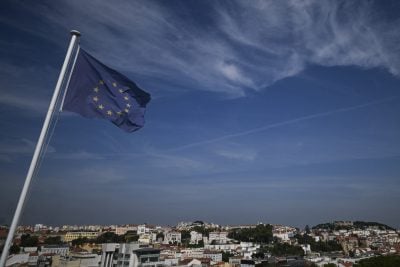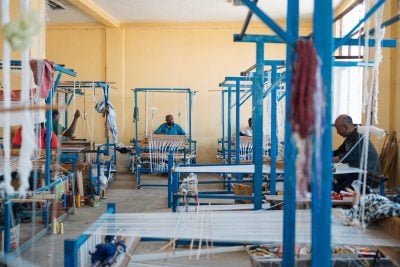South African born and bred, but now based and working in the US, Elon Musk is a complex man with a remarkable ambition. He is intent on seeing humanity become a multi-planet species. As prolific biographer Walter Isaacson’s new book Elon Musk describes it, Musk made the first million of his fortune – always the most difficult million, according to legend – by writing Zip2, a computer program that merged a database of maps with directory listings of businesses.
It seems that Musk’s parents had a hand in this. His father Errol gave him $28,000 and his mother $10,000. With that he created a company that later attracted venture capitalists to buy it out for $3m.
Musk then set about creating a digital payment system – PayPal. It is ubiquitous now, but at the turn of the millennium this was revolutionary. Musk, although the loser in a boardroom coup, made around $250m when PayPal was sold to eBay for $1.5bn.
As Isaacson writes: “Musk now had a new mission, one that was loftier than launching an internet bank or digital Yellow Pages.” That mission was to step into the void that NASA had left and work towards a mission to colonise Mars – making humanity interplanetary. To take this vision forward, Musk needed to learn all he could about rockets.
He read voraciously and was also able to contact an experienced rocket engineer, Jim Cantrell, who had worked on a US-Russian programme to decommission missiles.
Musk made two visits to Russia. The Russians played hardball in negotiations to buy two rockets, so Musk walked away and, flying back to the US, decided to build his own. And, as was his wont, he declared an optimistic timeline to launch SpaceX’s first rocket by September 2003. The first successful launch was in September 2008. Thus Musk joined Amazon’s Jeff Bezos and Virgin’s Richard Branson in the boys’ club of business magnates aiming for space.
Musk has since ploughed billions into SpaceX. Musk’s interplanetary quest is, as he sees it, an ethical impulse to save humankind. To others it may seem an egotistical overreach, bordering on insanity.
But Musk had an important advantage. Because SpaceX was a private company, and he was quite prepared to flout the rules, Musk could take all the risks that he wanted. As Isaacson writes, it was a philosophy of trying new ideas and being willing to blow things up. SpaceX found a base at an abandoned test site outside of McGregor, Texas, about 26-miles east of Waco, where it proceeded to try new ideas and blow things up.
Cost-plus no more
Perhaps the most important part of the SpaceX approach lay in Musk’s determination to get rid of the “cost-plus” financing model. This form of contract, used by NASA and the US Defense Department, means that the government keeps control of a project – such as building a new rocket, engine or satellite – and issues detailed specifications for what it wants done. In return a contracted company is paid all its costs – plus a guaranteed profit.
“Boeing and Lockheed just want their cost-plus gravy train,” Musk argued. “You just can’t get to Mars with that system. They have an incentive never to finish. If you never finish a cost-plus contract, then you suckle on the tit of government forever.”
As Isaacson explains: “SpaceX pioneered an alternative in which private companies bid on performing a specific task or mission, such as launching a government payload into orbit.”
He expands: “The company risked its own capital, and would only be paid when it delivered on certain milestones… There was a lot of money to be made if it built a cost-efficient rocket that succeeded, and a lot of money to be lost if it failed. ‘It rewards results rather than waste,’ Musk says.”
The Falcon 1 rocket, Musk’s first to launch, was a failure, due to a fuel leak. So, too, the second and third launches failed. Isaacson tells us that Musk ran out of money.
But he quotes Musk as telling another journalist: “We’re going to make it happen. As God is my witness, I’m hell bent on making it work.”
The fourth Falcon 1 attempt was a success, and Musk made history in launching the first privately-built rocket to reach orbit. SpaceX was awarded a $1.6bn contract to make 12 round trips to the International Space Station. Musk had been vindicated.
Cars and rockets in synergy
That NASA contract also allowed Musk to further develop his Tesla electric car company. In fact, there was a definite synergy between SpaceX and Tesla; both the rockets and cars required similar engineering and components, Isaacson suggests.
Musk had a number of other investments that were compatible. He ploughed money into Starlink – a company that builds communication satellites that are launched by his SpaceX Falcon9 rockets. He supplied Starlink communication services to Ukraine – and notoriously the Washington Post published an excerpt from this book saying that Musk disabled these while Ukraine’s armed forces were in the middle of attacking Russia’s fleet in the Black Sea. Isaacson later tweeted that he had misunderstood and that the service was never enabled there.
Musk was also arguing with his Tesla board that the company needed to develop a humanoid robot – Optimus, initially announced as a mass-market product. “This has the potential to be the far biggest thing we ever do, far bigger than a self-driving car,” he told Tesla’s chief designer Franz von Holzhausen.
Neuralink, like the Optimus robot, was inspired by science fiction – which Musk adored. The company envisaged creating a direct connection between a brain and a machine.
Neuralink created controversy when Musk uploaded a video to YouTube that showed an early experiment on a macaque monkey playing a video game. Animal rights activists were appalled.
Related articles
- Elon Musk’s Starlink: Closing the last mile for the internet in Africa?
- Sierra Leone joins Elon Musk’s Starlink satellite service
The X file
Equally controversial was Musk’s takeover of Twitter, which he re-named as “X”. At the centre of the argument was the issue of free speech.
Musk had often said that free speech meant permitting free expression even when you were totally opposed to what was being espoused. Some report that his micro-management of Twitter contradicts this.
Hard to know
While this book tells the rags-to-riches story of Musk’s business journey, what strikes the reader is his attitudes and behaviour towards friends, family and employees.
Isaacson’s account suggests that Musk’s early years in South Africa had a huge influence. Musk had a less than stable home life, and he was bullied at school. He blames his father for being abusive. Also, Musk says he has Aspergers Syndrome – which would seem to me to explain his difficulty in empathising with or understanding the perspectives of others.
Whatever the reasons behind Musk’s peculiar character, he is a complex man with a drive to be proven correct in his convictions. Many might consider him controversial, but there is something admirable about his obsessions, such as colonising Mars in order to save humanity; or his concern about a falling birth rate in the West. He has had 11 children from three marriages.
Want to continue reading? Subscribe today.
You've read all your free articles for this month! Subscribe now to enjoy full access to our content.
Digital Monthly
£8.00 / month
Receive full unlimited access to our articles, opinions, podcasts and more.
Digital Yearly
£70.00 / year
Our best value offer - save £26 and gain access to all of our digital content for an entire year!

 Sign in with Google
Sign in with Google 



